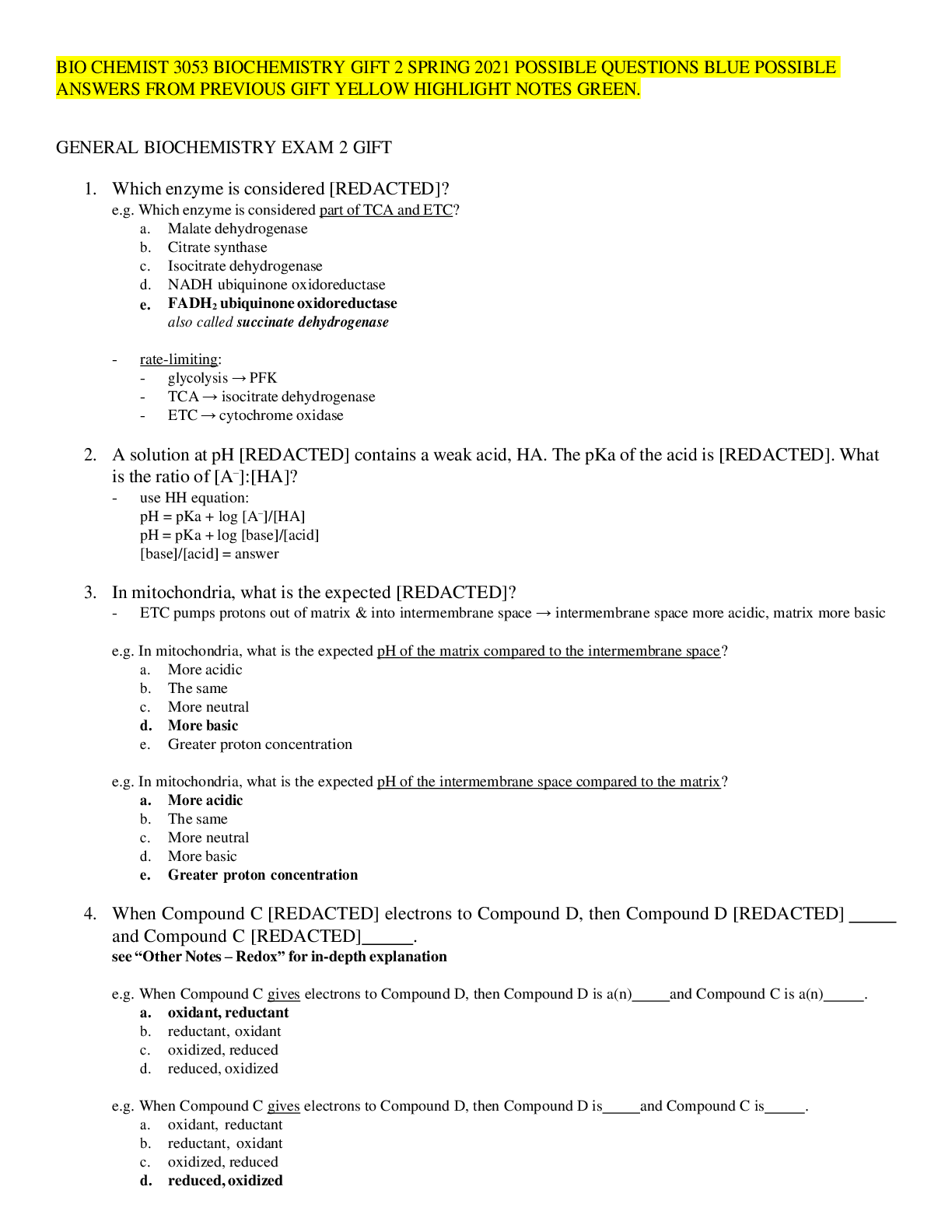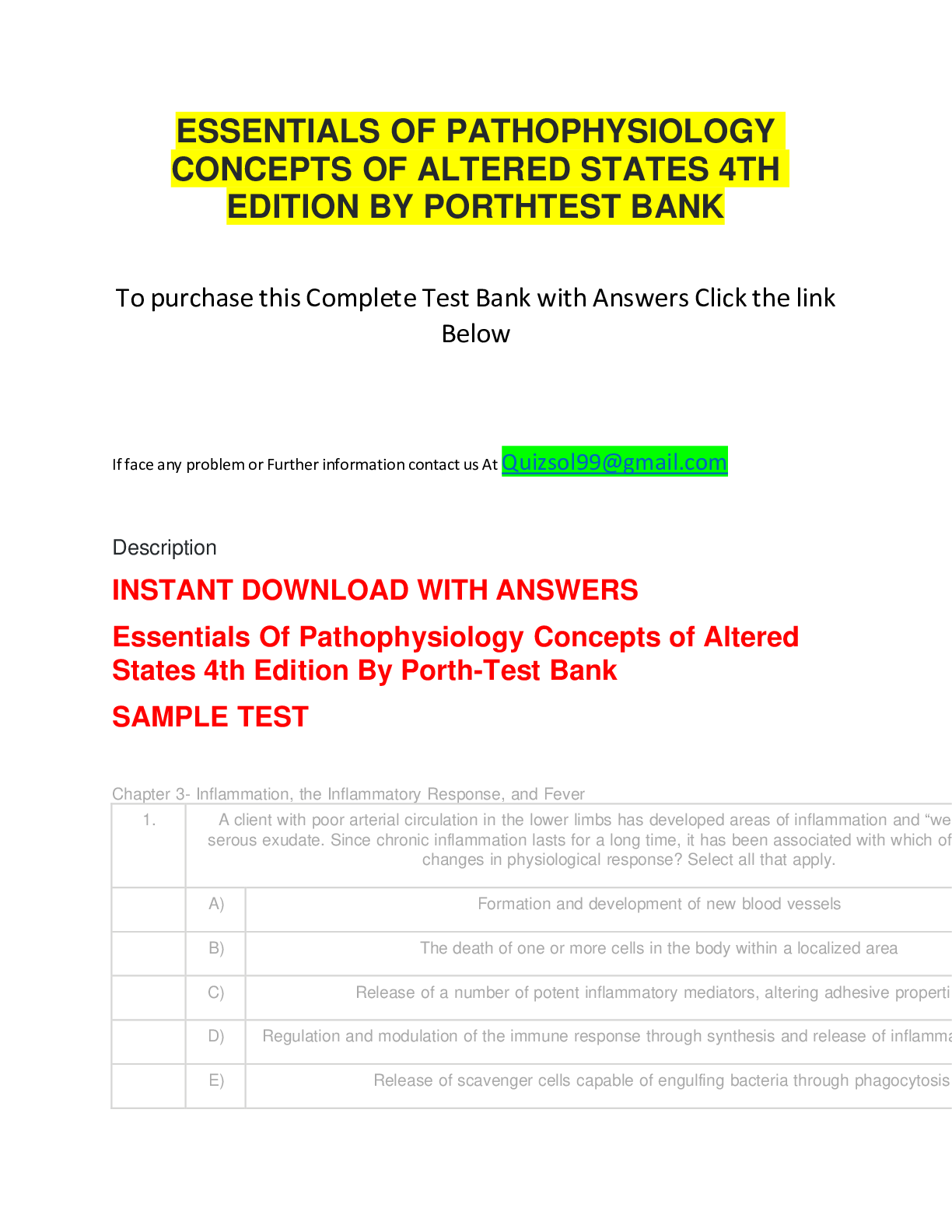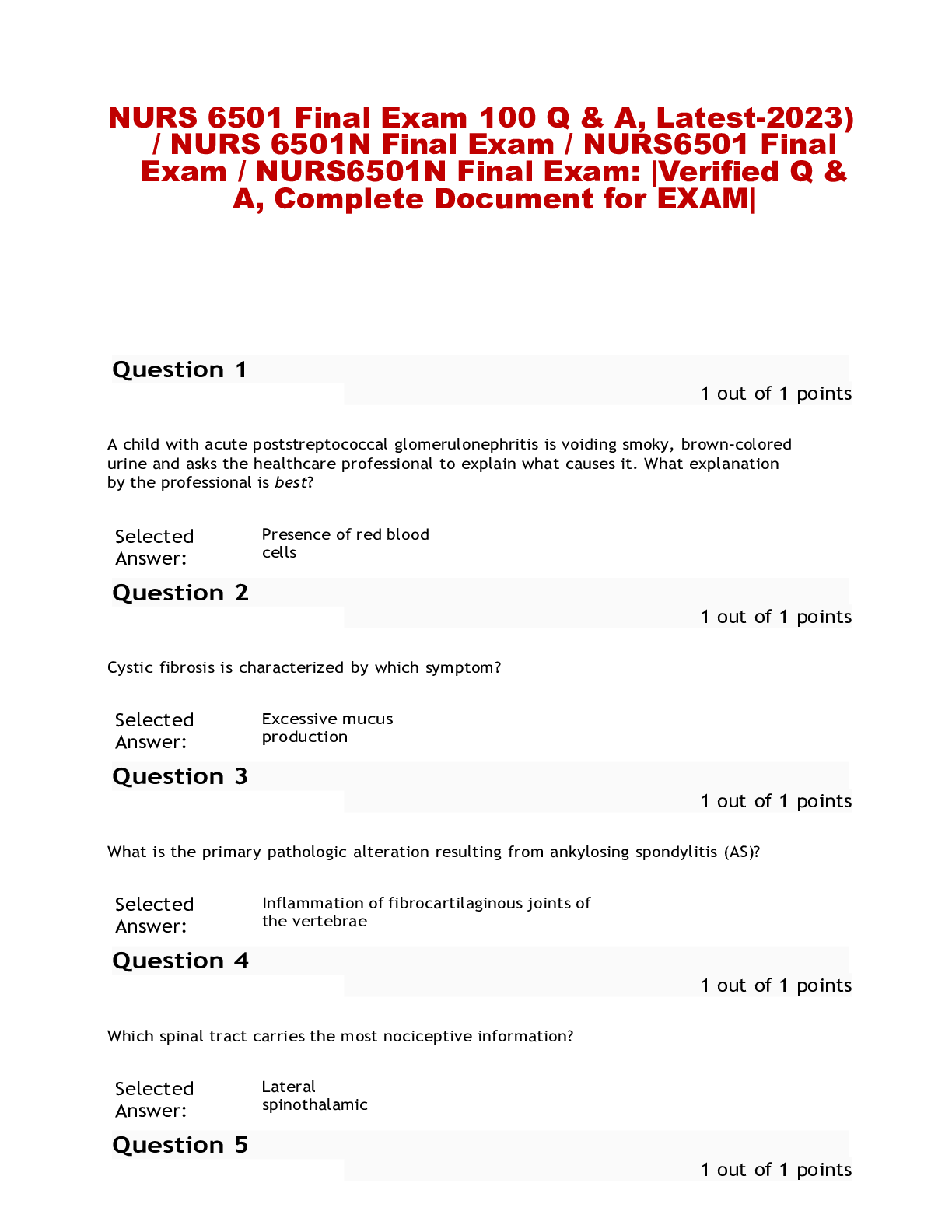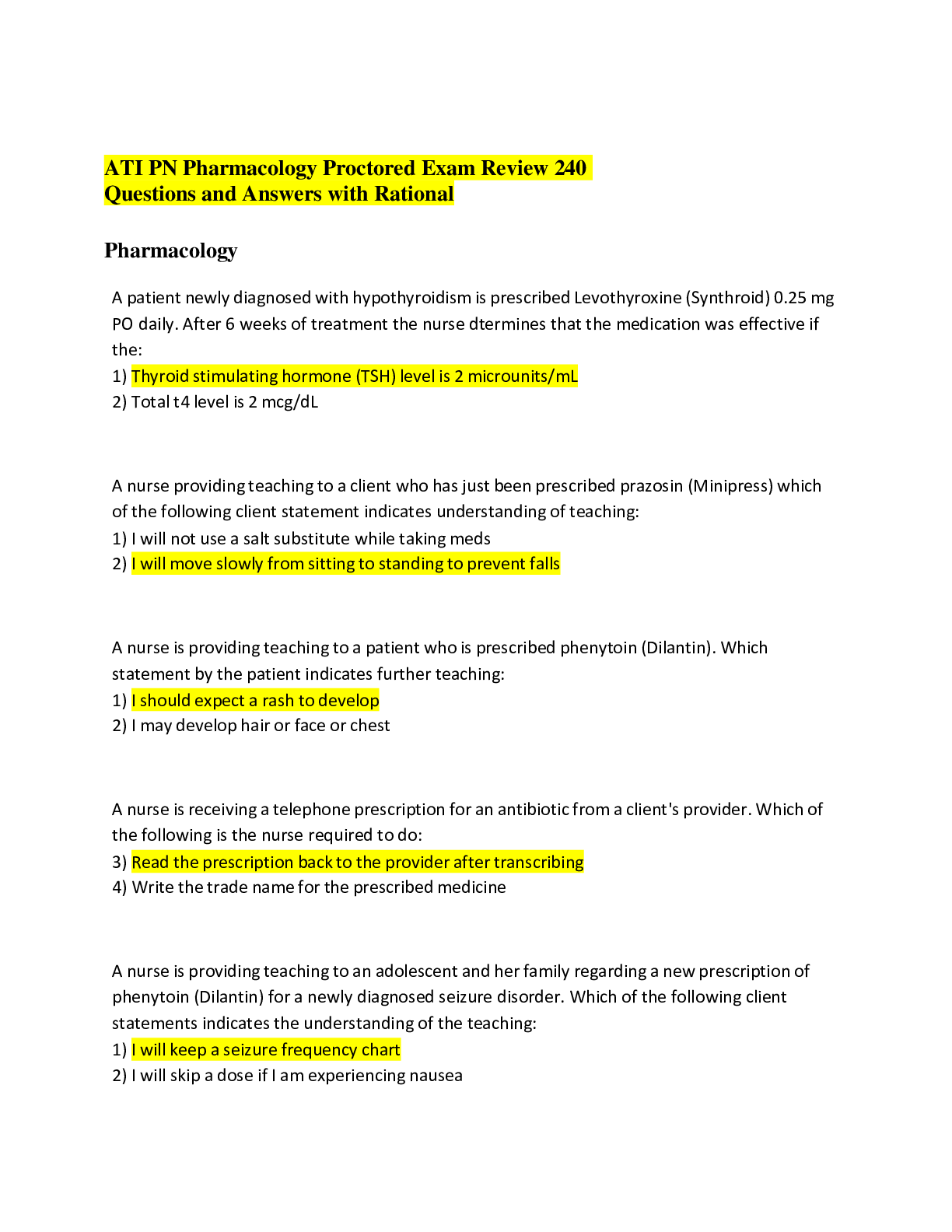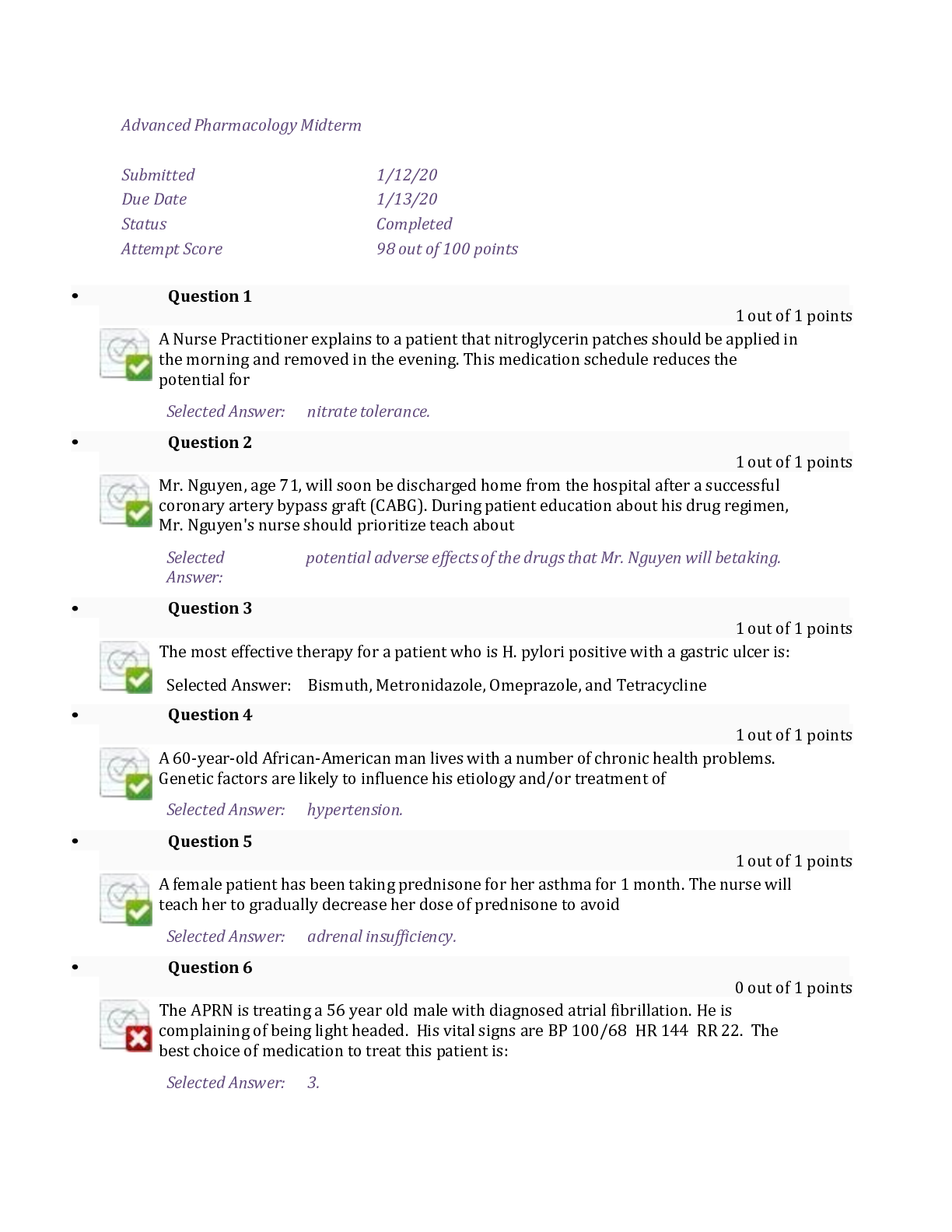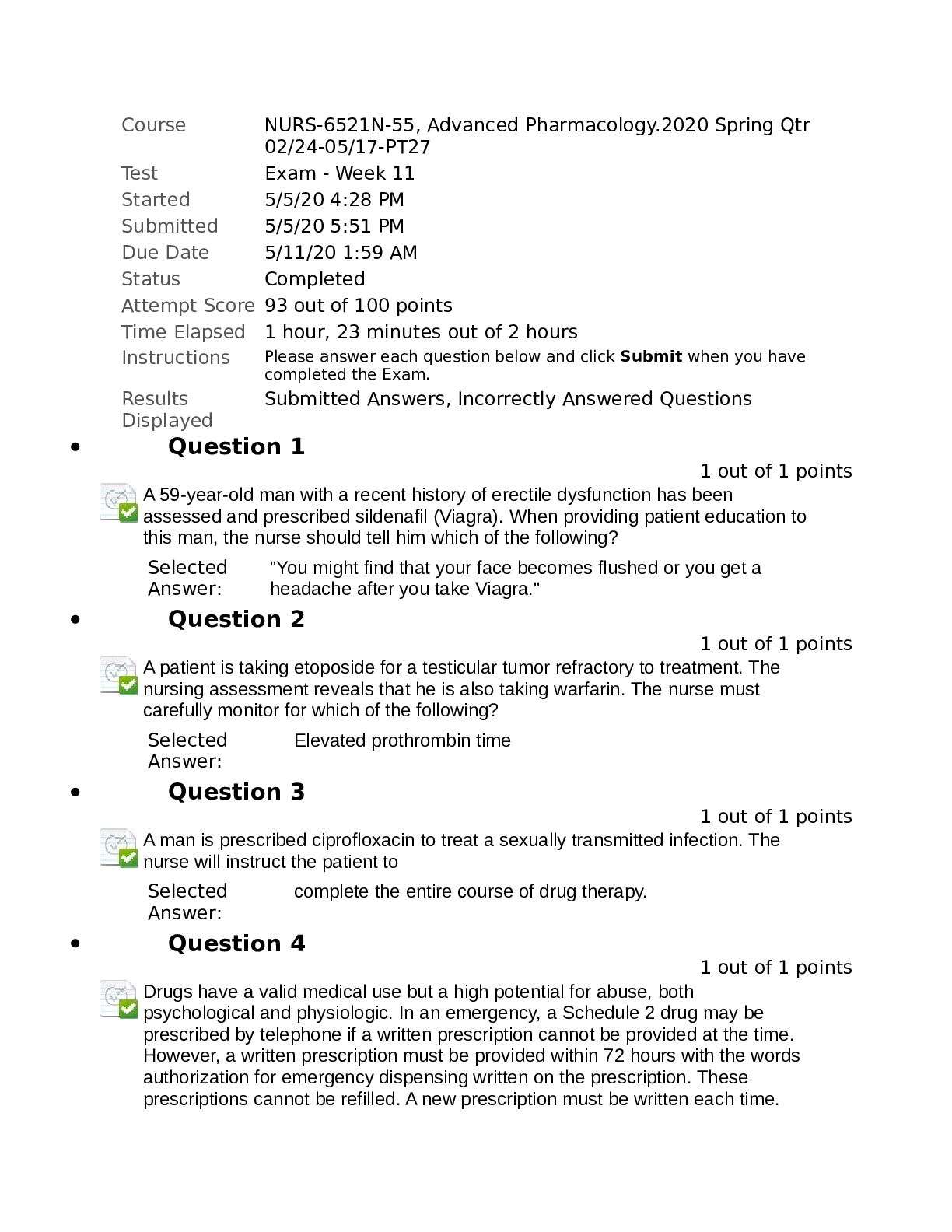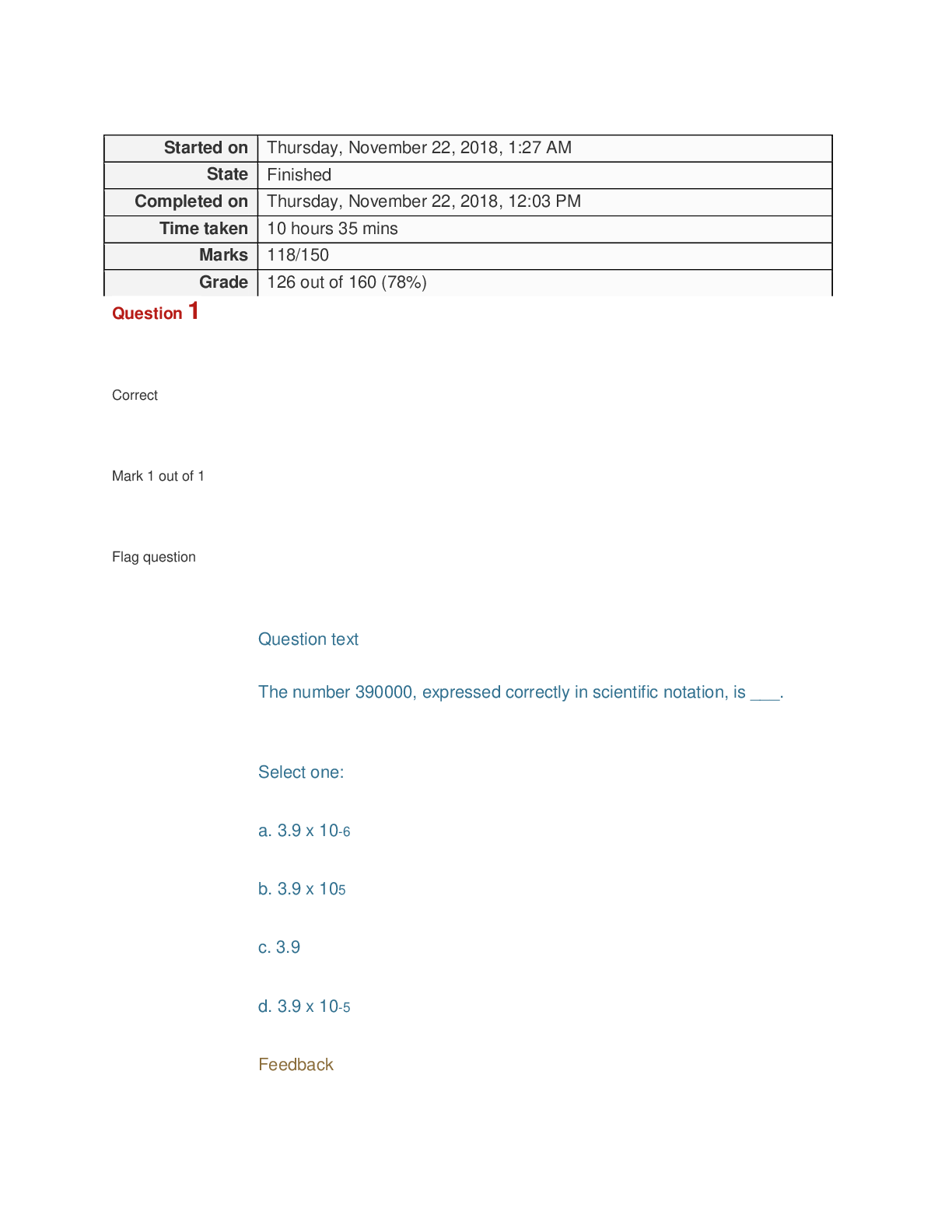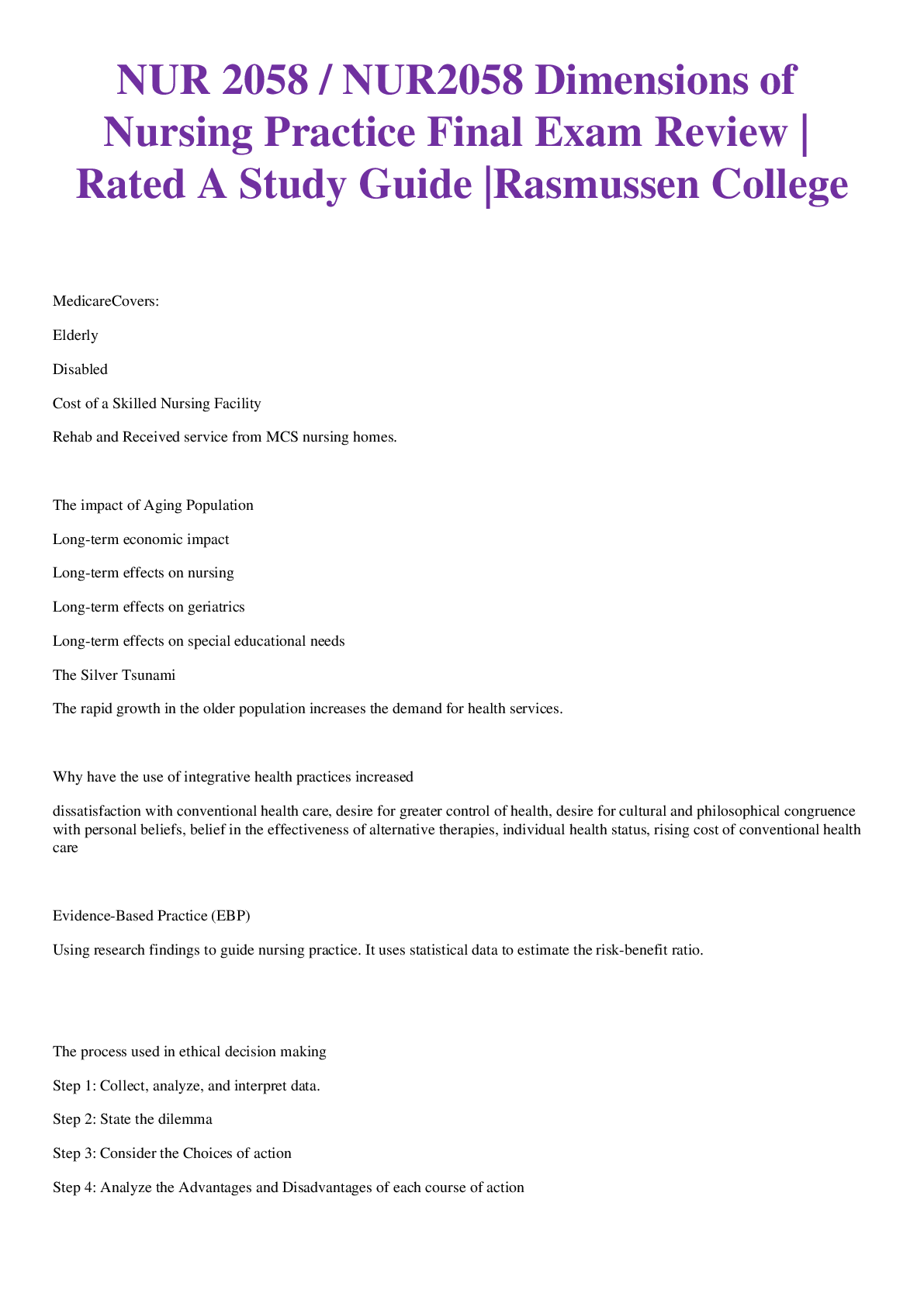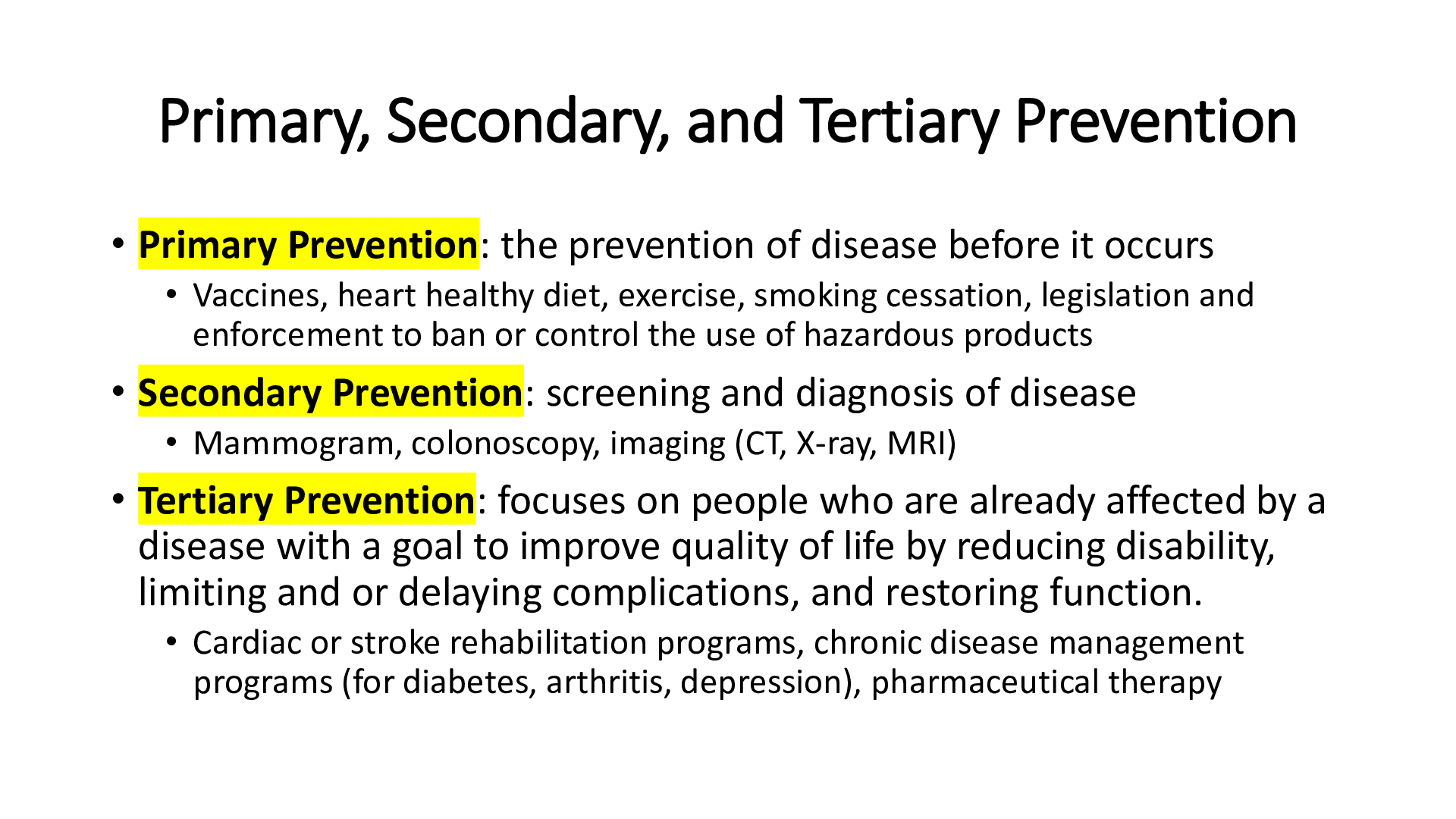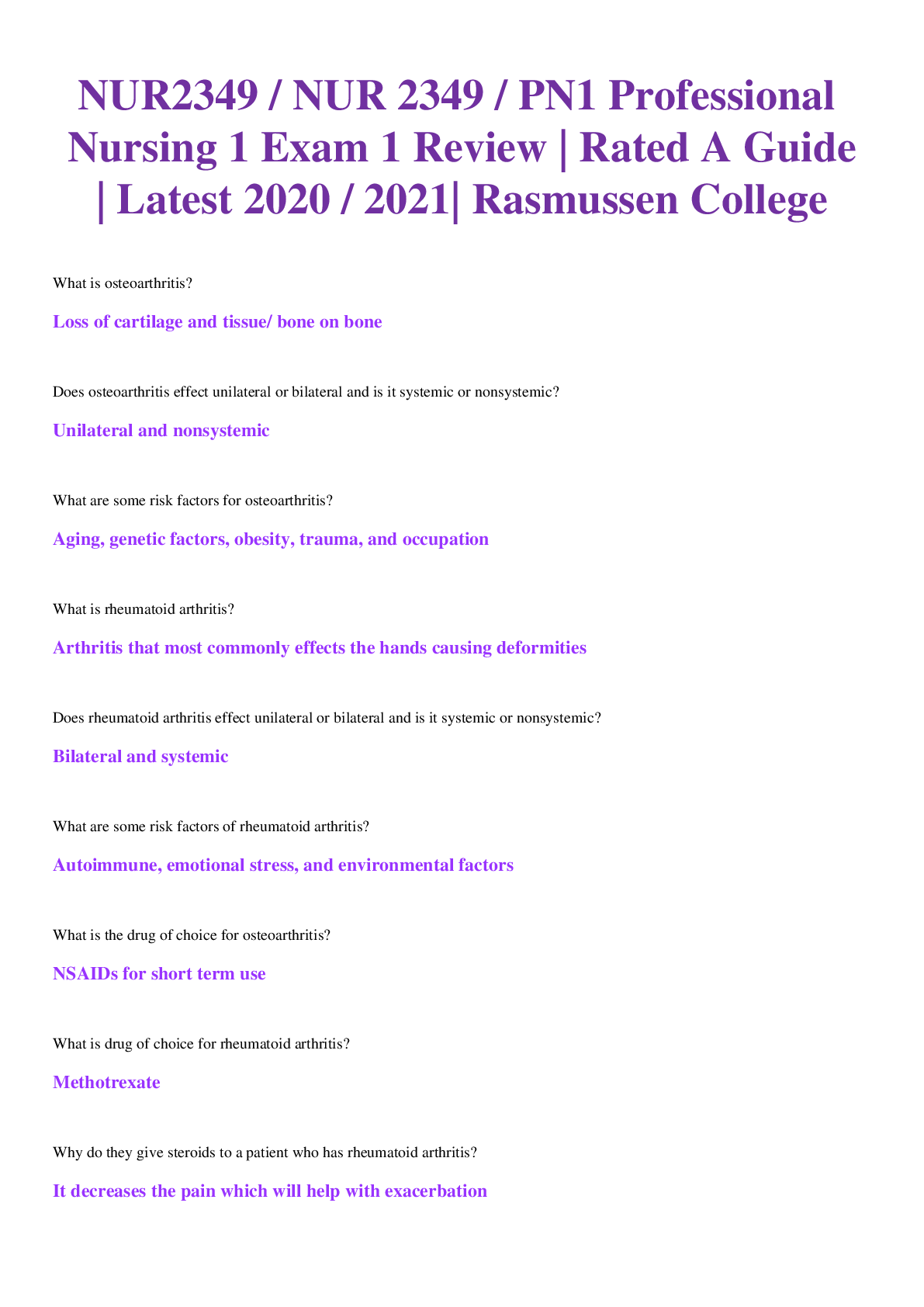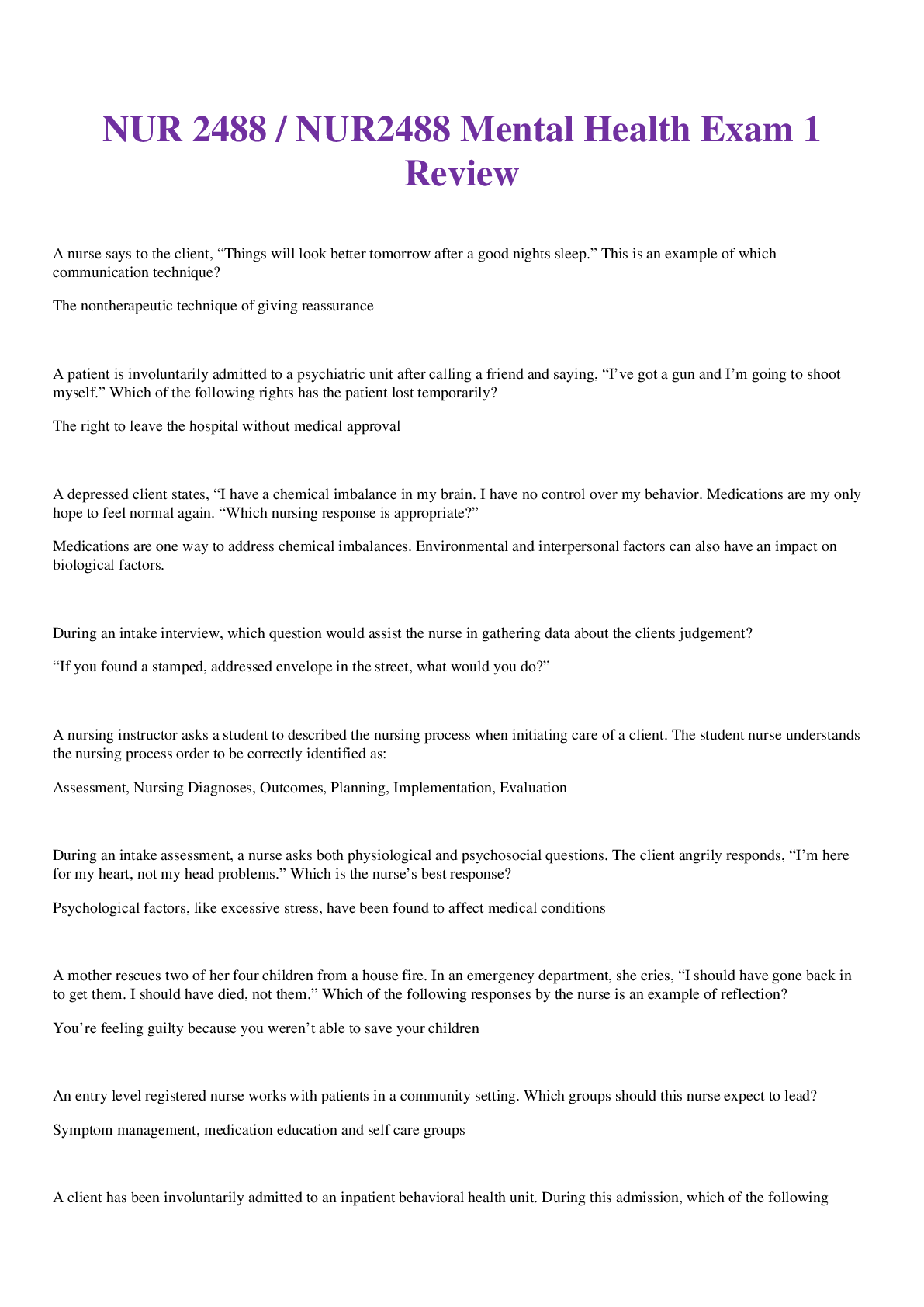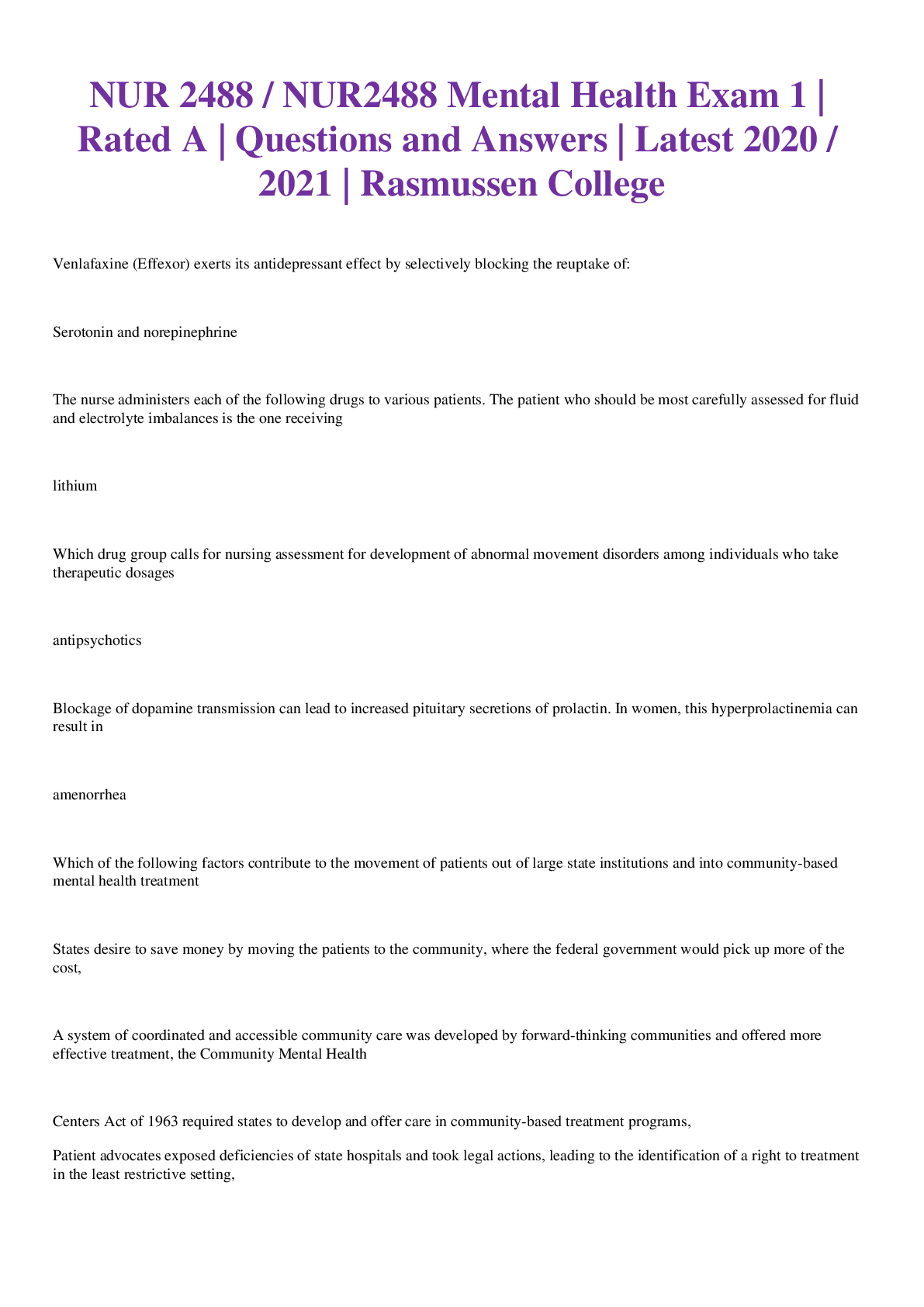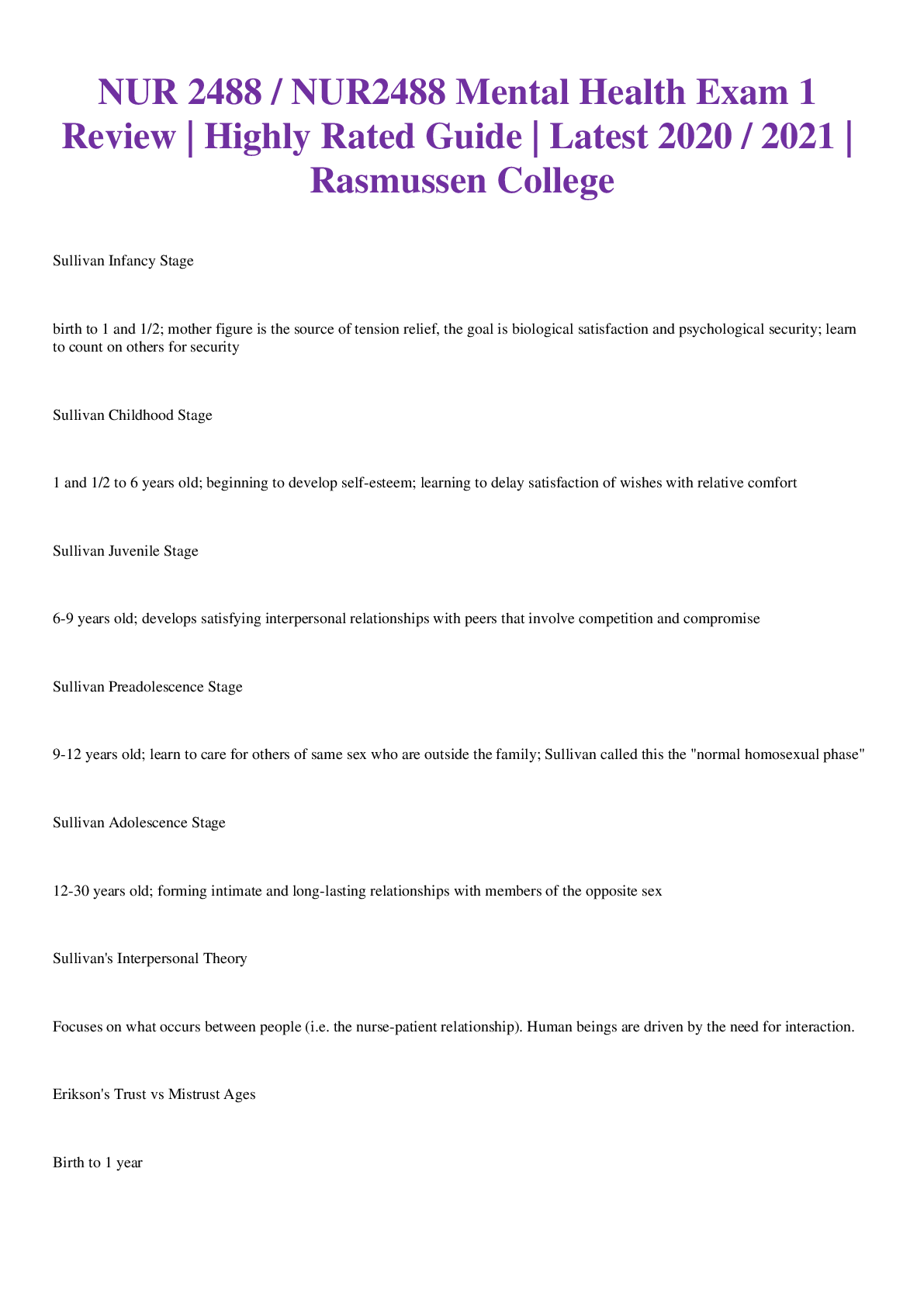Biology > EXAM REVIEW > BIO 320 Learning objectives for Exam 4 (All)
BIO 320 Learning objectives for Exam 4
Document Content and Description Below
BIO 320: Learning objectives for Exam 4 Chapter 16: Respiratory Physiology ● Understand the components of respiration: ○ Internal respiration; ○ External respiration. ● Understand the gen... eral organization of the respiratory system and the structural and functional characteristics of each part: ○ Conducting zone; ○ Respiratory zone. ● Understand the pressure changes during breathing and their implications. ○ Boyle’s law: The pressure of a gas (fixed) is inversely proportional to its volume. ● Understand the physical properties of the lungs, their cellular bases and their significance. ○ Compliance; the ease of a lung to expand under pressure ○ Elasticity; Lungs ability to regain original state after stretch ○ Surface tension; low is easy to move & high is harder ■ Law of Laplace : The alveolar pressure is directly proportional to the surface tension and inversely proportional to the radius of the alveolus; The pressure increase ,the radius decreases vice versa. ■ Surfactants: surface active agent ● Understand the mechanisms of breathing:inspiration & expiration ○ Muscles involved;diahragm ○ Pressure changes; ● Understand the pulmonary functional tests ○ Lung volumes; ○ Lung capacities; ○ Restrictive versus obstructive lung disorders. ● Understand the Henry’s Law on the dissolution of gases in liquid. ● Understand the relationship between capillaries alveoli. ● Understand the measurements of blood Po2, it importance and how it differs from hemoglobin saturation. ● Understand how partial pressures drive gas exchanges in the lung capillaries and body capillaries. ● Understand the cellular mechanism that drives changes in pulmonary perfusion to match ventilation. ● Understand the control of breathing: ○ Spinal motor neurons; ○ Rhythmicity center; Exam 4 Review Guide ○ Pons; ○ Chemoreceptors; ○ Pulmonary receptors. ● Understand the respective effects of Pco2 and Po2 on ventilation. ● Understand the difference between the Po2 and the oxygen content of the blood. ● Understand the different forms of hemoglobin and their relation to O2. ● Understand the respective physiological relevance of: ○ Po2; ○ Percent oxyhemoglobin saturation; ○ Hemoglobin concentration. ● Understand oxygen loading versus unloading and the factors that affect each. ● Understand the factors that affect the affinity of hemoglobin for oxygen: ○ pH; ○ Temperature; ○ Carbon monoxide; ○ 2,3-diphosphoglyceric acid. ● Understand the structural and functional differences between hemoglobin and myoglobin. ● Understand the transport of CO2: ○ Forms carried in the blood; ○ Role of carbonic anhydrase; ○ Chloride shift; ○ Bohr effect; ○ Reverse chloride shift. ● Understand the acid-base balance of the blood: ○ Organs involved; ○ Volatile versus nonvolatile acids; ○ Bicarbonate as a buffer; ○ Blood pH; ○ Control by ventilation. [Show More]
Last updated: 1 year ago
Preview 1 out of 4 pages

Reviews( 0 )
Document information
Connected school, study & course
About the document
Uploaded On
Oct 04, 2022
Number of pages
4
Written in
Additional information
This document has been written for:
Uploaded
Oct 04, 2022
Downloads
0
Views
49

